Character Sheets
PDF Copies:
Digital Copies:
Breakdown of the Character Sheet Sections
The following provides information concerning the character sheet and reading it.
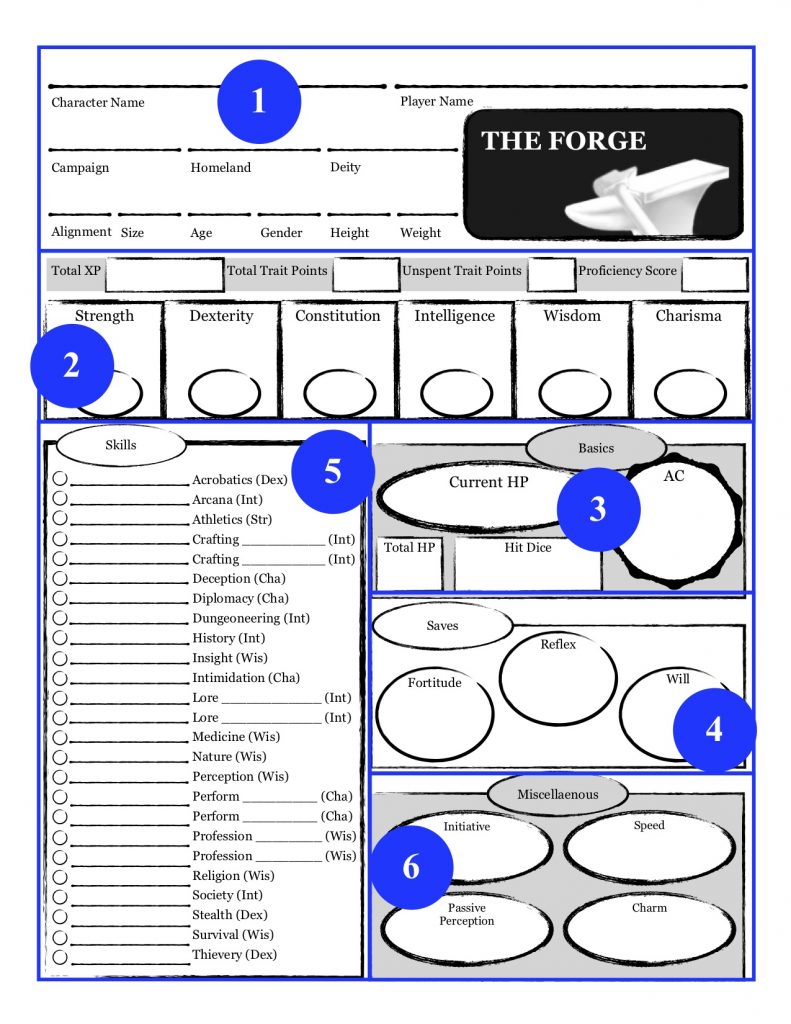
Section 1: Information
This section covers most of the basic choices about the character involving such as name, campaign, homeland, deity, and more.
Section 2: Ability Scores
This section has space for your Ability Scores and their corresponding modifiers. These stats form the base for most bonuses added to your rolls.
It also includes space to record Total XP (also called experience points), total Trait Points, Unspent Trait Points, and Proficiency Score. It should be noted that there exists a simple, based ten conversion rate that can be found in the Play Section.
Section 3: Basic
This section has some very important bonuses and numbers for your character’s statistics. This includes space to include Total HP (HP, also called hit points, is a number representing your health) and AC (AC, also called armor class, is a number representing your armor and your ability to avoid attacks).
This section also includes space to record Hit Dice (which is the die you use to determine your Hit Points). Finally, the Current HP spot can be used to record your current Hit Points, especially when you are below your full health.
Section 4: Saves
This section has space for recording your saves, Fortitude, Reflex, and Will. These represent your ability to avoid or resist negative effects, such as poison, a trap, or a charm spell.
Section 5: Skills
This section records the bonuses for your skills. Each skill has a listed ability next to it which means the skill bonus is equal to that ability’s modifier.
If you are trained in a skill, you can check the blank circle next to it to indicate the fact. Being trained in a skill, often from the Skill Training Trait, means you add your Proficiency Score to the bonus.
sNote, there are some skill actions that require you to be Trained in that skill to attempt the action and others that give disadvantage if you are not Trained in the skill, see the Skills Section for more.
Section 6: Miscellaneous
This section is a space to note your Initiative (your bonus to reaction to damage), Speed (how far you move in a single action, measured in feet), Passive Perception (your ability to notice details around you while not actively looking) and Charm (your physical appearance). See the Character Stats Chapter for more details.
Warning: Sections 8 onwards look different between the Fantasy and Steampunk versions. The only difference is with Sections 11 and 12.

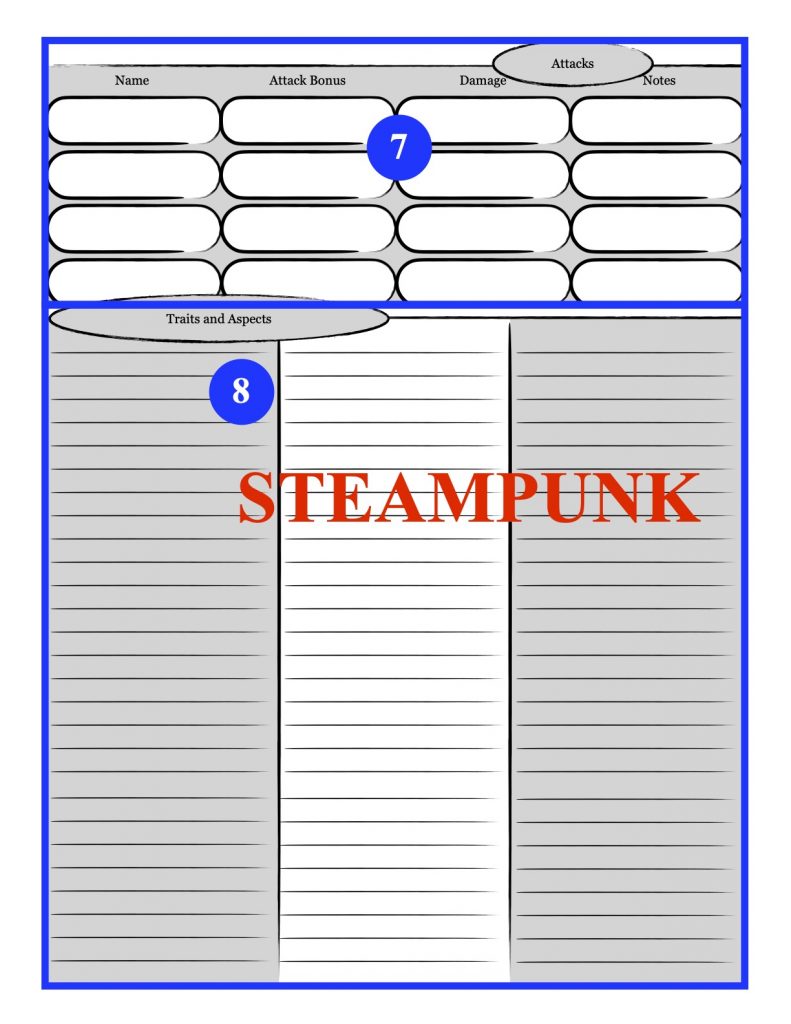
Section 7: Attacks
This section has space to record specific attack details. See the Character Stats Chapter for more details.
Section 8: Traits and Aspects Record
This section provides lines to record information concerning the Aspects and Traits you take.
Section 9: Additional
This space is for languages (which are based on the world the game is set in), conditions, immunities, resistances, and weaknesses. Conditions are often temporary and can either be beneficial or detrimental. Immunities are those effects that never impact you, often they are types of tags, such as mental, death, or fire. Resistances and weaknesses also use effect tags like immunities do. However resistances use values, for example, if you are resistant 5 against fire, remove the first 5 points of damage that has a fire tag. On the other hand, if you are weak against cold, you take double damage from effects with the cold tag.
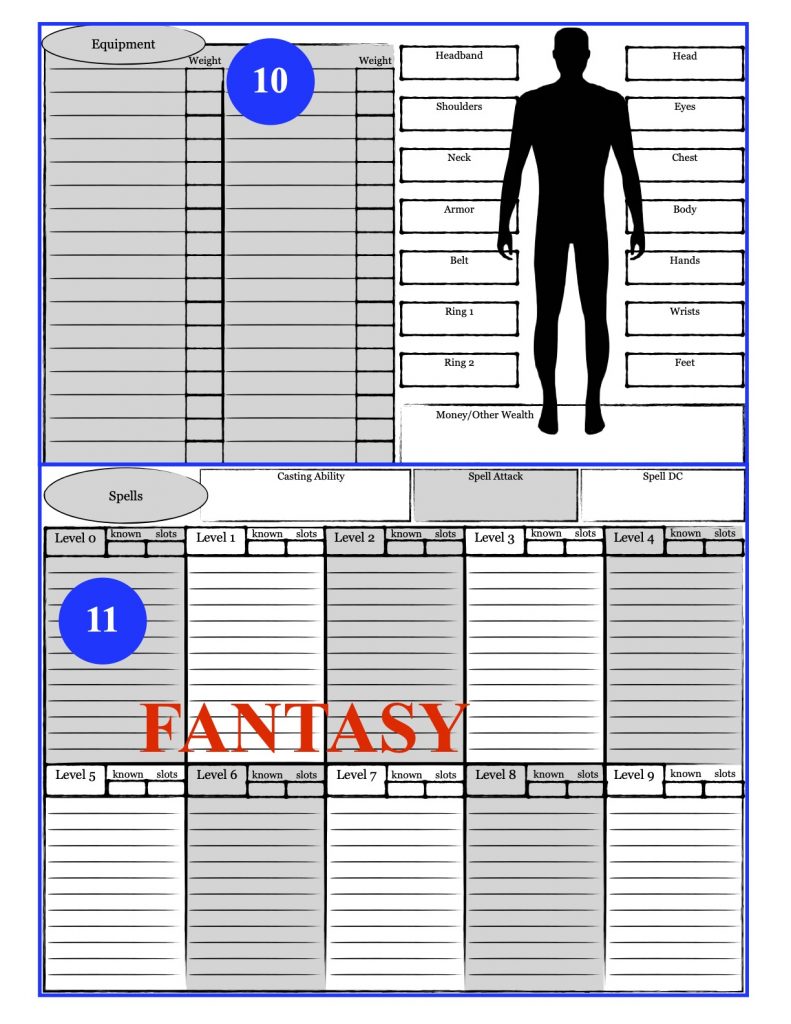

Section 10: Equipment
This section gives an area to list your items and their weight, called bulk in the Equipment Section.
Section 11: Spells (Fantasy Version ONLY)
This space is for your spells. The very top has space to record your Casting Ability, Spell Attack, and Spell DC. See the Character Stats Chapter for more details.
It also has slots for level 0 through level 9 spells, each with a box for how many known spells you have and how many spell slots you have for those levels. You may not necessarily need both, depending on the type of spells you can cast.
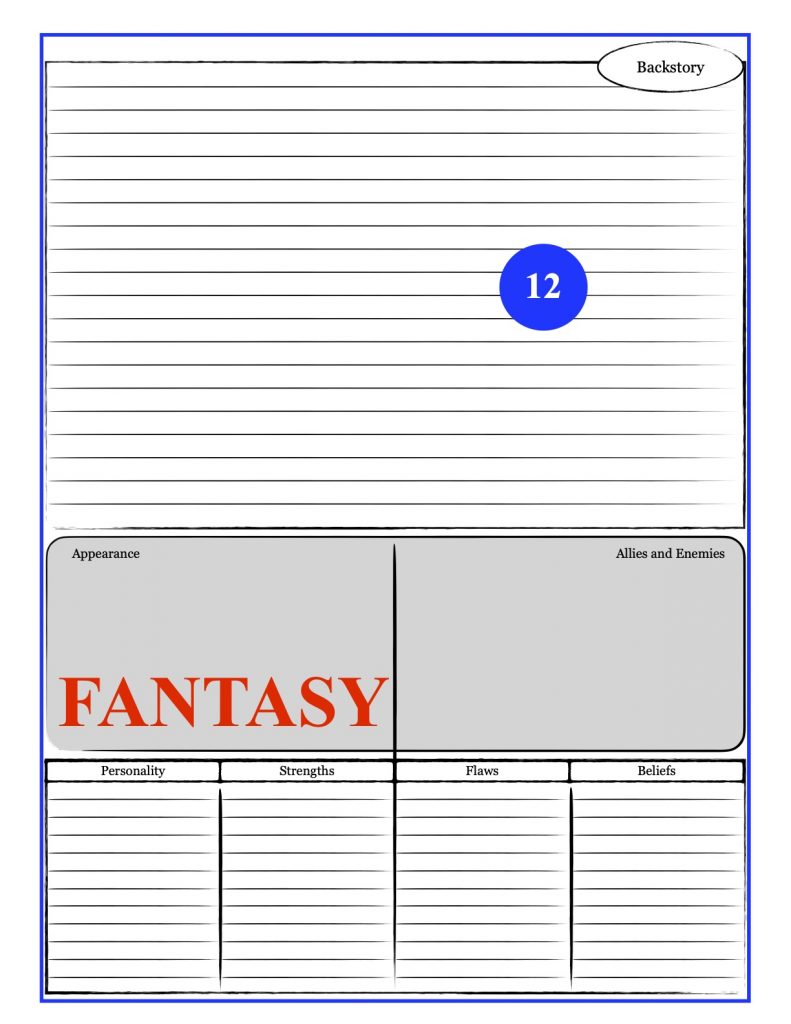
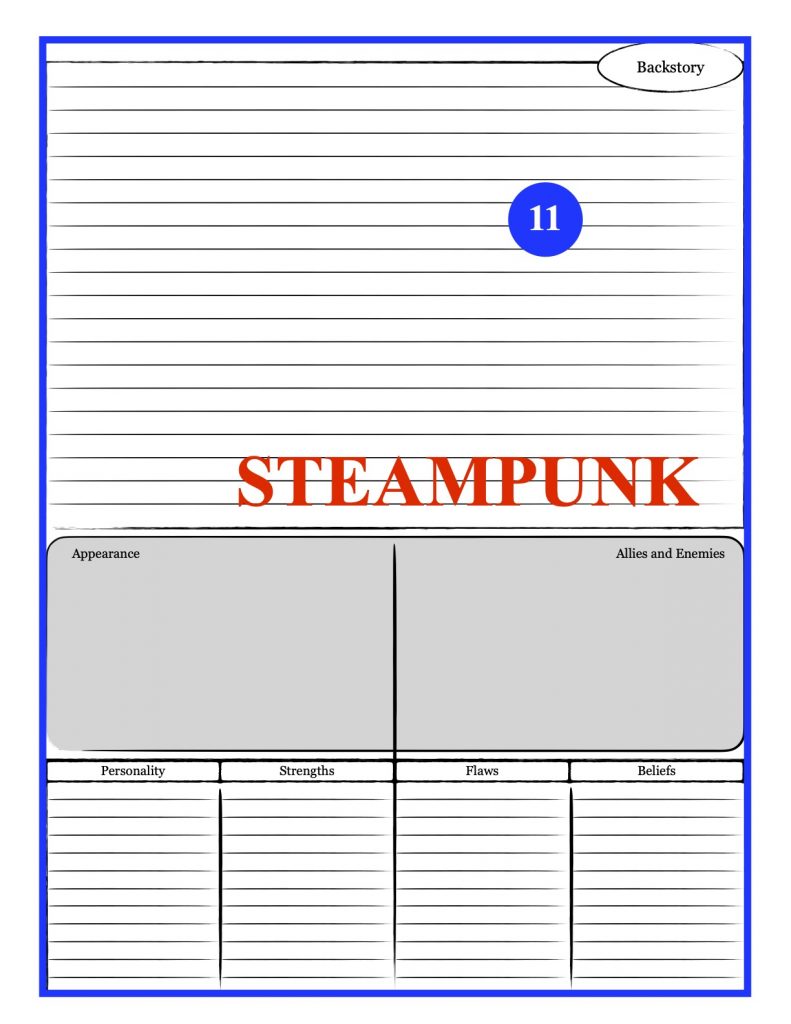
Section 12 (Fantasy) or Section 11 (Steampunk): Background and Additional Information
This section has space for your character’s background, appearance, notable non-player characters (called NPCs which often come in the form of allies and enemies), personality, strengths, flaws, and beliefs. This can also be used to make various character notes as needed.